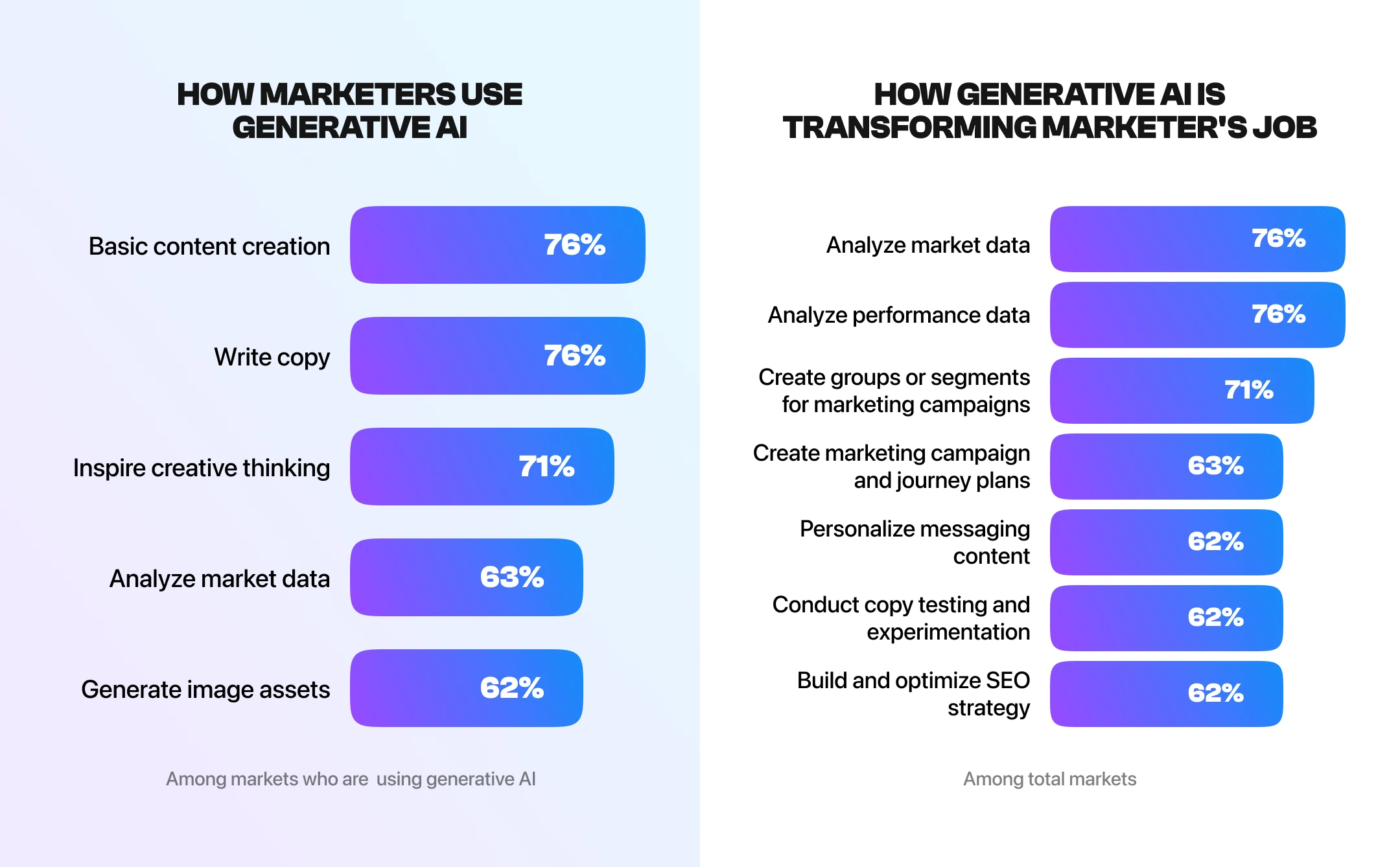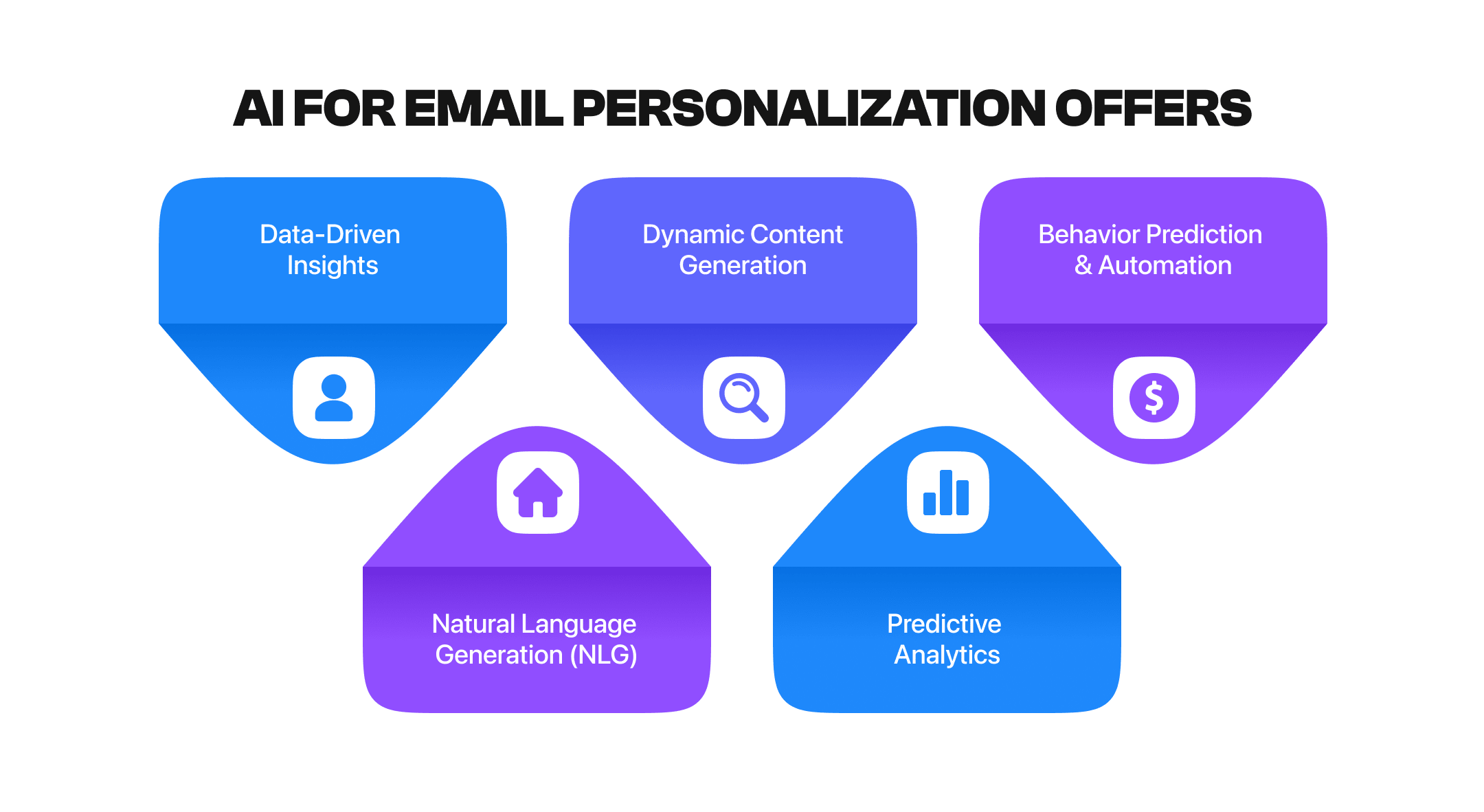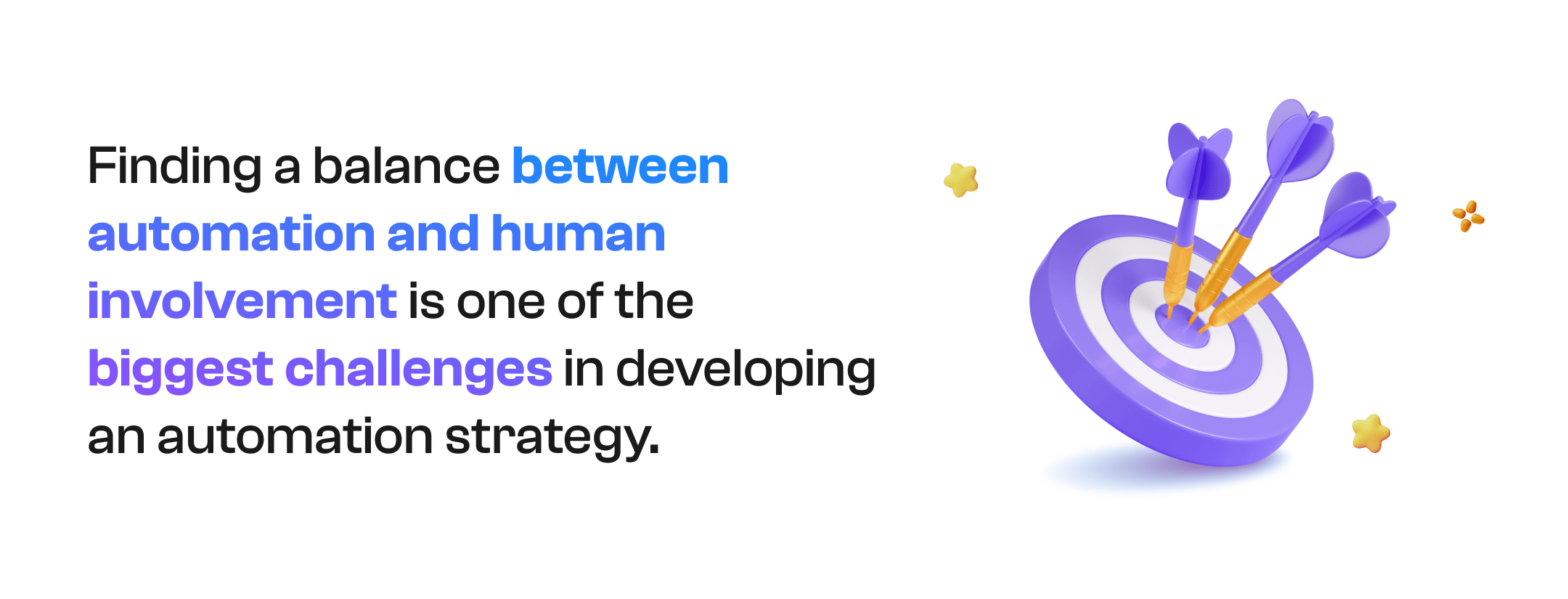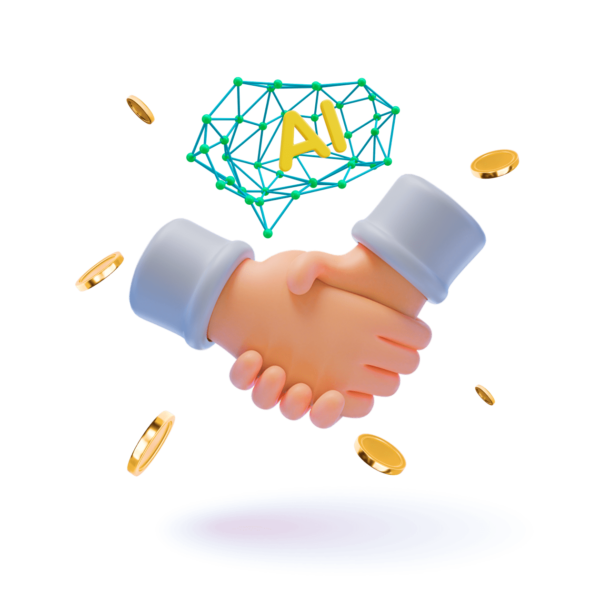If you’ve ever been responsible for lead generation, you know how draining and time-consuming the process can be.
“For years, my team and I lived the grind: scouring through endless data, juggling manual outreach, and balancing quality and quantity without losing our minds. Sounds familiar?” – Anastasiia Kuznetsova, Head of Account Management at SalesAR
Then came the pivotal moment: We integrated AI into our lead generation strategy. It wasn’t just a game-changer – it was a lifeline.
What if I told you that AI could help your team achieve 40% faster lead conversion without burning out? According to Gartner, companies leveraging AI for lead generation report a 50% boost in lead volume and a 40% reduction in acquisition costs.
Let me show you how technology can make your process smarter, faster, and more effective.
What is AI-Driven Lead Generation?
Think of AI as your silent partner in marketing – one that never sleeps, doesn’t get tired, and processes mountains of data faster than any human ever could. It’s like having a dedicated detective on your team, piecing together clues (or, in this case, data points) to uncover your most promising leads.
At its core, AI lead generation works by:
- Analyzing Data: Using algorithms to process information and uncover meaningful insights.
- Predicting Patterns: Identifying trends and behaviors that indicate which leads are most likely to engage or convert.
- Prioritizing Prospects: Ranking leads based on their potential value and readiness to take the next step.
- Evaluating Key Factors: Assessing data points such as: – Online behavior (e.g., website visits, content downloads). – Job roles and decision-making authority. – Company size and industry relevance. – Intent signals, like search queries or social media activity.
This gives you a clear, actionable picture of who to contact – and the perfect timing.
As I tell my team, AI enhances lead generation and completely transforms how businesses understand and engage with potential customers. It’s not about replacing the human touch; it’s about using data to make your outreach smarter, more personal, and more efficient.
The Evolution of Lead Generation: A Turning Point
I still remember the days when lead generation felt like a never-ending uphill climb. Back then, my team and I would spend hours manually analyzing spreadsheets, scouring LinkedIn for prospects, and crafting email campaigns that often felt like shooting in the dark. It was exhausting, inefficient, and, frankly, hit-or-miss. Sounds familiar?
Technology has revolutionized how businesses approach AI for lead generation as the game-changer we didn’t know we needed. According to Salesforce, marketers now say AI is the most critical aspect of their strategy. Why? Because it doesn’t just simplify the process – it reshapes it entirely.

Take personalization, for example.
Before AI, tailoring a message to match a prospect’s pain points required hours of research. AI lead generation tools can automatically analyze a prospect’s behavior, demographics, and online activity to craft highly relevant messages automatically. They are not smarter; they are faster.
And it’s working.
Salesforce reports that 98% of sales teams using AI believe it enhances lead prioritization. This means your team spends less time chasing unqualified leads and more time focusing on prospects ready to engage. It’s a turning point in lead generation – and trust me, there’s no going back.
Practical Applications of AI in Lead Generation
AI isn’t just a shiny tool for the future – my team and I use it daily to refine our strategies and boost efficiency. Let me share a few ways we’ve incorporated AI into our lead-generation process.
1. Personalization of Cold Mailings
Cold emailing has always been a tricky balancing act. You want to stand out, but if your outreach feels too generic, it ends up in the trash – or worse, the spam folder. That’s why personalization is critical, and AI has made it easier than ever to craft emails that resonate with recipients on a personal level.

Here’s how my team uses AI to personalize cold mailings:
- Profile Analysis: We gather links to our target audience’s profiles, such as their LinkedIn pages or company websites. AI analyzes these profiles to extract key details, like their role, industry, or recent achievements.
- Message Crafting: With this information, AI tools for lead generation create email content that aligns with the prospect’s professional background and potential challenges they might face. For example, the email might mention a recently published blog or a shared interest relevant to their industry instead of a generic introduction.
- Iterative Refinement: AI doesn’t stop at generating content. It learns from email performance metrics and adjusts future suggestions to improve engagement.
Lead generation with AI allows us to scale outreach without losing the personal touch. For instance, when we send AI-generated emails, we often receive replies like, “Wow, it’s like you understand my challenges.” Those moments are a testament to the power of personalization.
Discover what actually works — download our free PDF guide: “How to Generate Leads with Email”
Pro Tip:
Use detailed prompts to get the most out of AI. For example, instead of simply asking AI to “write an introductory email,” provide context like:
- The recipient’s job title.
- Their company’s current challenges.
- Your specific solution and its value.
The more specific you are, the more relevant and engaging the email will be.
This approach has drastically improved our open and response rates. Personalized emails show recipients that we’ve done our homework, establishing trust, which is the foundation of any successful relationship, whether with a prospect or a long-term client.
2. Handling Objections with AI Support
Let’s face it – objections are an inevitable part of sales. Whether they involve concerns about budget, timing, or simply skepticism about your offering, objections can derail conversations if not handled carefully. This is where AI has become an invaluable ally for my team.
With the help of lead generation automation, businesses can instantly generate responses to common objections, ensuring timely and effective communication.
Here’s how we use AI to navigate objections more effectively:
- Profile and Interaction Analysis: When a lead raises concerns, we input their data (e.g., previous interactions, company size, industry) into an AI tool. The tool analyzes this information and suggests potential responses based on similar scenarios it has processed in the past. For example, if a prospect says, “I’m not sure this is the right time,” AI might recommend highlighting ROI or sharing success stories from similar clients who initially had the same concern.
- Crafting Responses: AI lead generation tools can draft detailed responses to common objections, such as pricing concerns or questions about implementation. These drafts provide a strong starting point, saving us time while ensuring we effectively address the prospect’s pain points.
Let me give you an example:
A prospect recently expressed concerns about the cost of our services. Using AI, we quickly generated a response that included:
- A breakdown of how our solution would save their team time and money in the long run.
- A success story from a client in the same industry.
- A suggestion for a phased rollout to help manage costs.
The prospect replied positively, and we could move forward with the conversation.
However, as helpful as AI is, it has limitations. One area where it often falls short is tone and nuance. For instance, AI might generate a technically accurate response that is too formal or robotic. That’s why we always review and tweak its suggestions to ensure they feel human and empathetic.
While AI provides a foundation for handling objections, I always remind my team that people buy from people. While AI can assist with logic and data, emotional intelligence – listening and responding with empathy – remains firmly in the human domain.
Using AI for objection handling has helped us respond faster and more effectively, reducing the number of stalled conversations. It’s also improved our team’s confidence, as they have a reliable tool to fall back on when faced with tough questions.
3. Market Analysis and Research
Understanding your market is the cornerstone of any successful AI lead generation strategy, but the sheer volume of data available today can be overwhelming. This is where AI shines – it can process massive datasets in minutes, identify trends, and uncover opportunities that might otherwise go unnoticed.
Here’s how we use AI to tackle market analysis and research:
- Competitor Analysis: AI tools like Crayon and SEMrush allow us to monitor competitors’ activities. For example, we can see what keywords they’re targeting, which of their campaigns are performing well, and even changes they’ve made to their messaging. This insight helps us position our services uniquely and avoid blending in with the crowd.
- Customer Demographics and Preferences: AI helps us understand the demographics of our target audience – age, industry, location, and job roles – along with their behaviors and preferences. For instance, AI tools for lead generation can analyze social media interactions and website traffic to reveal what content resonates most with our prospects. This allows us to create relevant and timely campaigns.
- Emerging Market Trends: Spotting market trends early is a game-changer. AI platforms like BrightEdge and SparkToro analyze search behavior, news articles, and online conversations to identify growing topics of interest in our industry. This helps us get ahead of the curve and position ourselves as thought leaders in emerging areas.
While researching a new vertical, we recently used AI to analyze customer reviews for similar products. The AI flagged a common pain point that competitors weren’t addressing. Armed with this insight, we adjusted our messaging to emphasize how our solution solved this problem, leading to higher engagement and a noticeable boost in lead quality.
AI has saved us countless hours of research while providing more accurate and actionable insights. It allows us to refine our strategies based on real data rather than guesswork and ensures we’re always targeting the right audience with the right message.
4. Calculating Lead Costs
Managing the cost of lead generation is one of the trickiest parts of the process. Overspend, and you’re wasting resources. Underspend, and you risk missing out on valuable opportunities. AI has become invaluable in helping us accurately calculate lead costs and design sales funnels that drive results.
Here’s how AI fits into the equation:
- Accurate Lead Cost Calculations: AI tools like MadKudu and HubSpot analyze historical data to calculate the cost of acquiring each lead. These tools consider multiple factors – ad spending, content creation costs, team hours, and conversion rates – to give us a clear picture of our spending and where we might be overspending.
- Predicting ROI for Campaigns: Beyond calculating costs, AI can predict the potential return on investment for campaigns before we even launch them. This helps us prioritize campaigns with the highest likelihood of success and avoid wasting resources on low-performing ideas.
- Sales Funnel Optimization: While AI handles the number crunching, my team focuses on designing a sales funnel that aligns with our goals and reflects our customers’ journey. AI tools like Funnel.io and Ortto help us analyze each stage of the funnel to identify bottlenecks or drop-off points.
I always emphasize that while AI for lead generation is fantastic at handling data, we must interpret those insights and align them with our overall strategy. Automation gives us the numbers, but human expertise ensures the funnel reflects the needs and expectations of our prospects.

With AI managing the data-heavy tasks, we’ve reduced our cost per lead and increased the efficiency of our sales funnel. By knowing exactly where our resources are going and how well they’re performing, we’ve achieved a much healthier balance between cost and return.
We handle appointment setting with qualified B2B leads — you stay focused on growing revenue.
Lessons Learned: Implementing AI Successfully
My team and I faced our share of challenges along the way, but each hurdle taught us something valuable. Here are the lessons we’ve learned that can help you make your AI implementation a success.
Data Accuracy is Key
The accuracy of AI’s output depends entirely on the quality of the data you feed it. When we first started experimenting with AI tools, we realized how important clean, structured data is.
For instance, duplicate entries in our CRM or incomplete data fields would throw off lead scoring and personalization efforts. The AI did its job, but the results weren’t reliable because the input data wasn’t up to par. That’s when we introduced regular data-cleaning practices – removing duplicates, standardizing formats, and filling in missing information.
Before implementing an AI lead generation strategy, audit your existing data to ensure it’s consistent, complete, and up to date. This upfront effort will pay off by ensuring your AI tools work as intended.
According to a Forbes study, 45% of marketers report that poor data quality is their biggest challenge with AI. If your data isn’t accurate, even the best AI tools won’t deliver the results you’re looking for.
Human Oversight is Crucial
AI is a tool, not a replacement for human expertise. Always review its output to ensure it aligns with your communication style and the specific needs of the conversation.
For example, when handling objections, AI might generate a technically sound response, but it might miss the emotional undercurrent of the conversation. Human intuition is irreplaceable in high-stakes communications, such as discussing budgets or addressing sensitive concerns.
One situation stands out: a client raised concerns about the complexity of implementation. The AI suggested emphasizing technical support, but the client needed reassurance about timelines. By stepping in and adjusting the response, we addressed their real concern and moved forward with the deal.
Balancing Automation and Strategy
One of our biggest lessons is that AI provides insights, but we must apply those insights strategically. AI can crunch numbers, analyze patterns, and calculate lead costs, but it doesn’t know your business goals or customer journey. That’s where human strategy comes in.
For example, while AI helps us calculate the cost per lead, my team is responsible for designing a sales funnel that ensures those leads convert effectively. It’s not just about the data – it’s about interpreting it and making it actionable within the context of your overall strategy.

Combine lead generation with AI for data analysis, automation, and predictions, but keep control of the big picture. The combination of automation and human judgment drives success.
Start Small and Scale Gradually
We began by using AI to personalize cold emails. Once we saw measurable improvements in open and reply rates, we expanded into other areas, like market analysis and objection handling. By scaling gradually, we could evaluate results at each step, refine our approach, and avoid unnecessary mistakes.
Test AI tools on one specific task before rolling them out to other areas of your process. This allows you to measure performance, identify gaps, and build confidence in the technology before investing more.
The Future of AI in Lead Generation
What’s next for AI lead generation? The possibilities are expanding rapidly. AI will help us find leads in the coming years and redefine how we nurture and grow customer relationships. Here’s what I see on the horizon:
Deeper Integration of AI with CRMs
Lead generation with AI CRMs will provide actionable recommendations during interactions, such as:
- Identifying the best times to reach out.
- Suggesting relevant talking points based on behavior and past interactions.
- Offering live prompts during calls to guide conversations.
Sales teams will make smarter, faster decisions, leading to more productive conversations and shorter sales cycles.
The Growing Importance of Ethics and Data Privacy
- Expect stricter rules on data collection, such as GDPR and CCPA, which will require businesses to adopt secure, compliant practices.
- Companies prioritizing ethical AI use and transparency in data practices will stand out in competitive markets.
- Responsible AI usage will create value for prospects while fostering long-term customer loyalty.
How to Start Leveraging AI Today
Integrating artificial intelligence lead generation doesn’t have to feel overwhelming. The key is to start small, target specific inefficiencies, and gradually expand. Here’s a step-by-step guide to help you get started:
1. Audit Your Current Lead Generation Process
Before investing in AI tools, examine your existing process closely. Where are the bottlenecks? Which tasks take up too much time or yield inconsistent results?
- Are you spending hours manually qualifying leads?
- Are your cold emails struggling to resonate with prospects?
- Do you experience high lead drop-offs in certain stages of your funnel?
Pinpointing these inefficiencies will help determine where AI can make the biggest impact.
2. Choose AI Tools That Align with Your Goals
Once you’ve identified your pain points, select AI tools to address them.
- Predictive Analytics: Tools like MadKudu or 6sense help prioritize leads based on their conversion likelihood.
- Chatbots for Lead Engagement: Platforms like Intercom or Drift qualify leads 24/7 by handling inquiries and guiding prospects to the next step.
- Email Automation: Tools such as Toolza or HubSpot create personalized, targeted emails at scale to boost engagement and open rates.
Choose tools that complement your goals and address your most pressing challenges first. It is better to start with one focused use case than overhauling your entire system simultaneously.
3. Train Your Team to Leverage AI-Driven Insights
AI works best when paired with human expertise. Your team needs to understand how to interpret and apply AI’s insights.
- Educate: Provide training sessions or demos to familiarize your team with the tools’ functionality.
- Combine Strengths: Show your team how AI can streamline their work, such as scoring leads or personalizing outreach while emphasizing the importance of the human touch in conversations and relationship-building.
AI can handle repetitive tasks, but success depends on your team’s ability to use those insights strategically.
Conclusion
Reflecting on our journey with AI, one thing is clear: AI is a partner, not a replacement. It’s a tool that amplifies what we do best. While it crunches the data, we make the decisions. While it automates tasks, we nurture relationships. This balance between artificial intelligence lead generation and human expertise makes modern marketing powerful.
Lead generation with AI has never been more accessible, and its potential to transform marketing is unmatched. Whether you’re looking to personalize emails, predict which leads will convert, or analyze market trends, there’s an AI solution waiting for you. I encourage you to take that first step – explore the tools, experiment, and see the difference AI can make for your team. The possibilities are endless.
No cold outreach, no stress. Just sales-ready calls with decision-makers.

